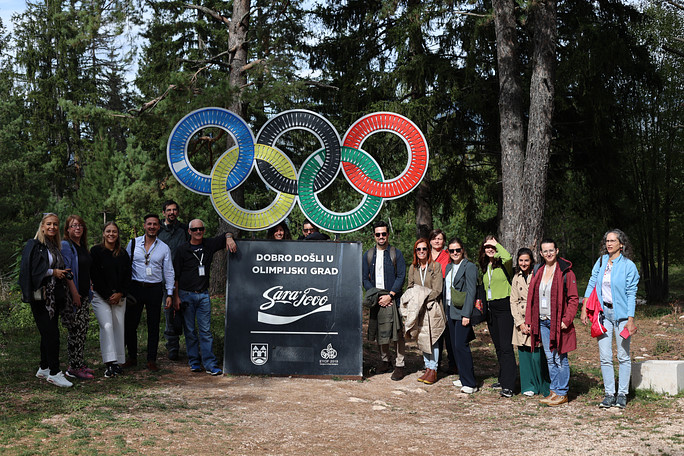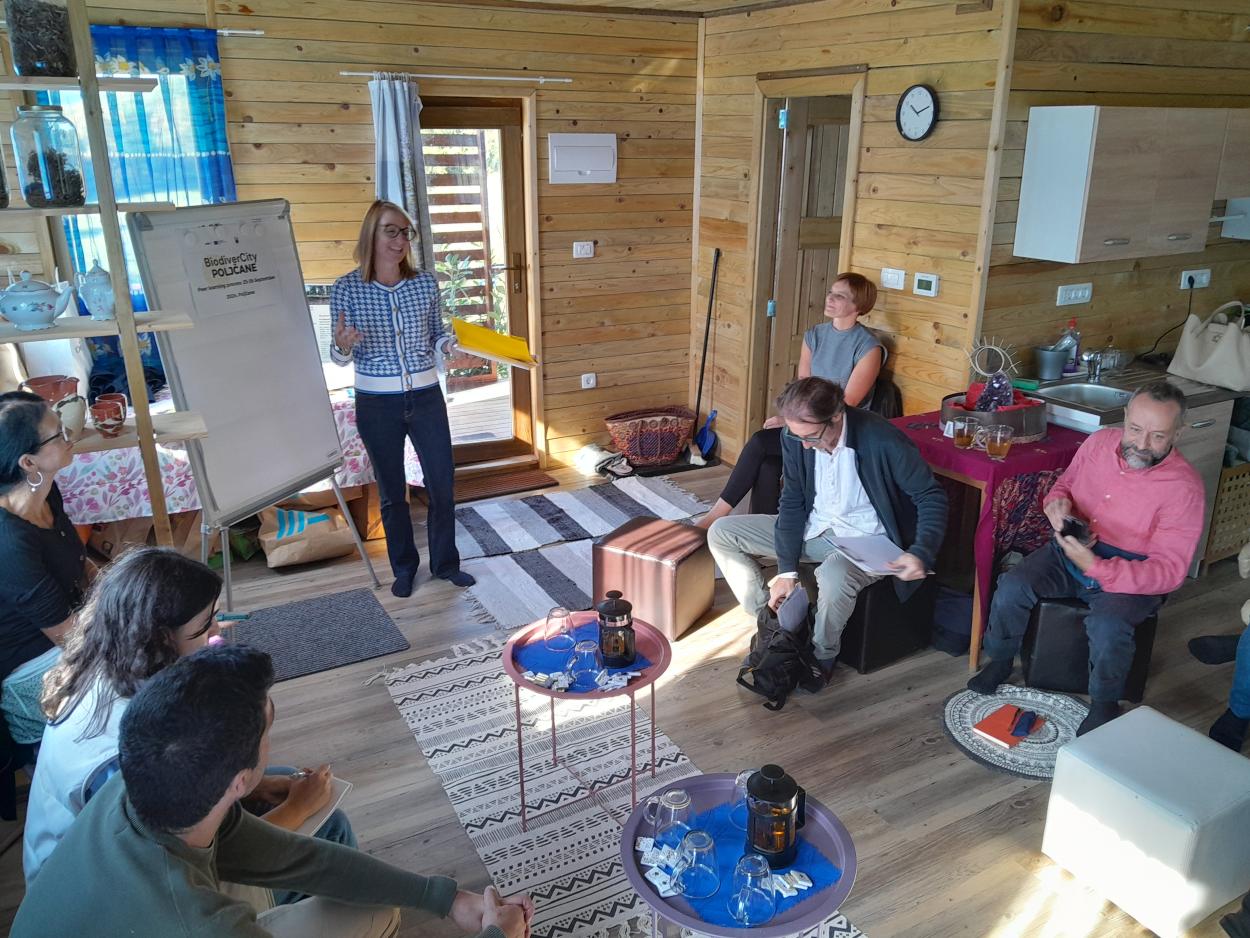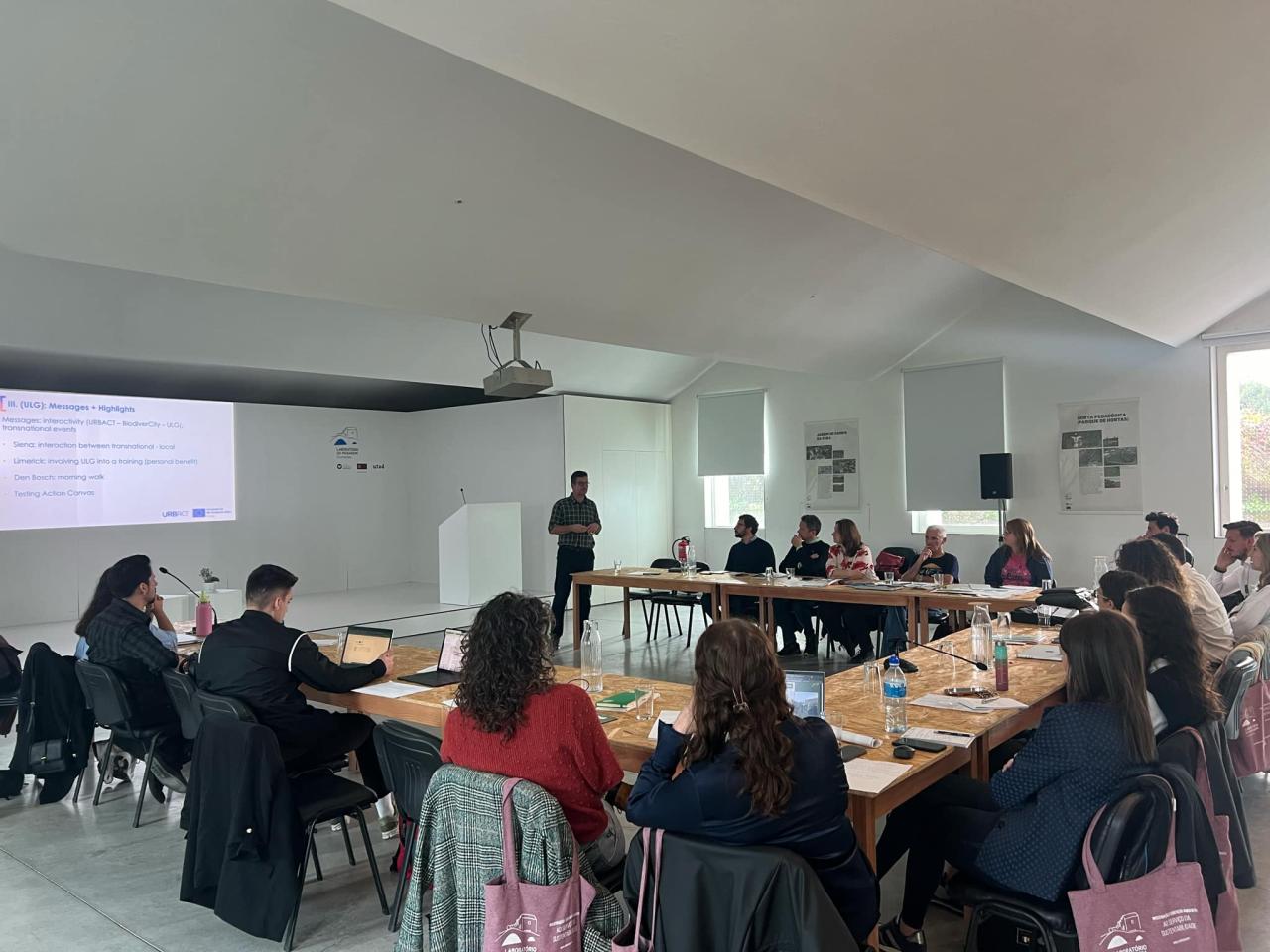Engagement, the evergreen challenge
As for the thematic fields: while many partners want to learn more about engagement, many of them do not take the chance provided by BiodiverCity, and do not organise interactive Urbact Local Group (ULG) meetings with team-building moments, training and capacity-building events included, to provide personal benefits for often voluntarily working ULG members. If ULG members do not feel themselves and their input appreciated and valorised, it is not a surprise that they often become less cooperative. The more interactive the ULG, the more committed the members are to implementing the actions. Sharing ownership is a key point here and it was again explained during the MTR based on three mini-case studies provided by partner cities.
Although community engagement has been tackled many times as a theme, we will, of course, organise an extra online session dedicated to this. Will it help?
How to measure the impact of exchange and learning?
It is not as easy to answer this question as you might think at first sight. Like in every network, in Biodiversity partners perform differently. There are cities where ULG members indeed co-create the Integrated Action Plan (IAP), participate in transnational meetings, what’s more, they give advice to other partners in specific cases. In addition, political support makes the action-planning journey effective. This is very positive and a great success.
Other partners face many barriers in this field: lack of language skills, the impossibility of paying travel costs for non-staff members, official limitations regarding the size of travelling delegations due to ecological concerns, negative attitudes towards “travelling projects”, participatory approaches are not rooted so deeply in the culture, political leadership is more hierarchical, the theme is completely new. All of these result in slow local progress, and the expectation is that the action plan will not be so comprehensive in these cases. But what if the network inspires an above-mentioned “weaker” partner who submits for example a proposal and gets funding for an infrastructure project? It would be a clear added value not only locally but to the BiodiverCity network as well.
So, which case is the bigger success?
Having the right person at the right meeting is not enough - the right person must present the right topic!
Besides larger, very intensive meetings (core network meetings) with all partners attending them, BiodiverCity also has smaller transnational meetings, called peer learning meetings, when the most interested partners gather around a specific topic. In September 2024 few partners met in Poljčane, Slovenia to talk about – among others - permaculture in a dedicated learning facility (garden). It was great to see that this topic was new even for Guimarães, one of the most experienced partners which was awarded recently as Europe’s Green Capital 2026. And indeed, they can reinforce their successful community garden based on their “permaculture experience” in Slovenia. The same applies to Siena, another experienced partner, from where two relevant ULG members, very active in the local community garden scene, attended the meeting, this way guaranteeing that the lessons learnt will be transferred to the ULG in Siena. From Dunaújváros it was not possible to delegate “gardeners” but as it turned out later on, permaculture is an unexploited bond among ULG members, and the topic generated a great discussion and stimulated further testing actions. So, the meeting was a great success, but whether it was the result of a conscious preparation or was it a lucky constellation?
Because despite all intentions and preparations, sometimes the message does not go through, and this “lucky constellation” is not so visible. For example, during a similar, great meeting in Sarajevo, participants visited another garden which also became an URBACT Good Practice later on. Perhaps it was my fault as a lead expert, or we did not spend enough time on the preparatory work, but finally, in the garden, a local architect talked about something interesting, but completely inappropriate at that place and that time. Contrary, on the following day, we met a fantastic ULG member and none of the group understood why we did not spend more time with her topic, in the garden for example. So, although the meeting in Sarajevo was great in general, regarding this point we could not explore its full potential for sure.
Lessons learnt? Preparation of a good meeting takes unexpectedly serious time…

Size indeed matters!
In June 2024 BiodiverCity partnership went to Limerick, Ireland, to analyse the Green and Blue Infrastructure Strategy (GBI) Limerick City and County Council prepared in 2023. Partners found that such a comprehensive (but not long at all) strategy on green and blue infrastructure is key, simply because it paves the way for several new policies targeting green infrastructure and biodiversity and very few partners have such an overall framework. Although the possibility was open to all partner cities to create a similar strategy within the URBACT project as an IAP, none of the partners will do that. Well, there are several reasons behind this, and partners can draft great action plans independently from this, but it is also sure that such a framework strategy would be needed in many partner cities and they missed this chance now.
In May 2024 we organised an online session with partners related to the local progress made based on transnational inspiration. Veszprém’s climate adaptive grassland management (later on awarded as URBACT Good Practice) was so inspirational that most partners will include it in the local journey somehow (e.g. part of the testing action, included in the action plan). Well done, great success! Although the outcome locally is the IAP, however, I often experienced in the partnership that “understand, adapt and reuse” works better in the case of small practices (another example: inspired by partners, Vratsa will plant Bulgaria’s first Miyawaki forest as a testing action).
Lessons learnt? The action planning process will be supported in various ways (e.g. peer-reviews as planned originally as well as extra online sessions dedicated to specific issues such as risk management, result indicators and monitoring framework – as a response to the needs arose in the MTR meeting) and based on the great tools URBACT provides game-changer action plans will be also drafted. Yet, transferring smaller, more concrete practices often seems more realistic…
Doing more or doing less?
The answer is neither as clear as we might think at first sight. In October 2024, partners met in Guimarães and made a poster exhibition about the visions and main directions behind the Integrated Action Plans. Based on a workshop linked to the Coherence Checklist and integration aspects, it was clear that there is a gap between partner cities’ understanding of the IAP challenge as well as their performance related to the action planning process.
It is also evident in the BiodiverCity network that many partners will do more than written in the Application Form. Biodiversity and nature-based solutions are hot topics in the EU and global policy arena. As explained in the Baseline Study, besides compulsory URBACT-related tasks, some partners shared their potential interests towards the elaboration of the City Biodiversity Index, the organisation of a bioblitz in the frame of the global City Nature Challenge, and working on new financial schemes regarding biodiversity (e.g. biodiversity credits). Although it fits very well with the network, yet, it is a big issue that many partners will participate in the City Nature Challenge 2025 voluntarily, while Guimarães also prepares its City Biodiversity Index. This is a great success!
So, it seems like an enthusiastic network, and I must meet this enthusiasm too. Therefore, more articles and case studies are prepared (see the website) based on the great knowledge facilitated by the network. The only question is how to help partners translate this enthusiasm into local action plans.

What next? Moving forward from urban biodiversity to climate action and nature-based solutions
As mentioned before, during the Mid-Term Review Meeting partners set those methodological fields linked to the IAP process they would like to learn more about. So, this is clear how to assist partners methodology-wise and related actions are under organisation.
„Nature-based solutions are the future as we could see in Limerick, and we will incorporate it into our Testing Action”. „Involve businesses” is crucial when setting actions. These ambitions formulated during the Mid-Term Review Meeting will be hopefully also reflected in the complexity of the action plans to be peer-reviewed during the following Core Network Meeting in March 2025.
This would be the ultimate goal… Since nature is our best ally in combating the negative effects of climate change, the story of urban biodiversity is also about making our cities more resilient by enhancing the adaptive capacity of cities through nature-based solutions. Although nature-based solutions have been explained and showcased several times so far, in the mirror of the draft action plans it will also be a question of how to strengthen this aspect in the IAPs to maximalise the potential of exchange and learning…


